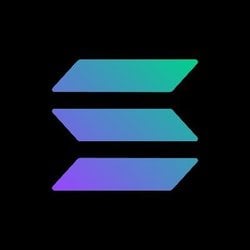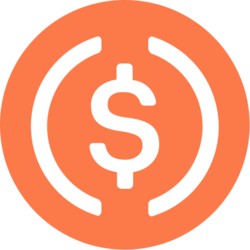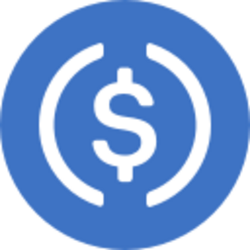Jose Luis Pelaez Inc | Digitalvision | Getty Images
There’s a way for student borrowers pursuing Public Service Loan Forgiveness to get their debt wiped away sooner than they might have expected.
But that program, called PSLF Buyback, has been experiencing some challenges of late.
Chief among them: As of July 31, there’s a 72,730-person backlog of borrowers waiting to have the Department of Education process their applications, according to a new court filing. That’s up from 65,448 borrowers as of the end of June.
Some of the borrowers CNBC has spoken with have been waiting for half a year or more for answers. Others have only a few months’ payments to make.
PSLF, which President George W. Bush signed into law in 2007, allows certain not-for-profit and government employees to have their federal student loans canceled after 120 payments, or 10 years.
Here’s what borrowers need to know about PSLF Buyback.
What PSLF Buyback is
The Biden administration first offered PSLF Buyback in the summer of 2023.
The opportunity allows borrowers who’ve hit 120 months of qualifying public service employment to submit a request to the Education Department to retroactively pay for — or “buy back” — any months they missed because of a forbearance or deferment.
During those payment pauses, borrowers often don’t get credit toward PSLF.
How your buyback offer is calculated
After you’ve submitted your buyback request, the Education Dept. is supposed to send you an offer letter. That should include the number of monthly payments you missed during your public service history, and a chance to pay that bill now in exchange for student loan forgiveness.
More from Personal Finance:
Trump floats tariff ‘rebate’ for consumers
Student loan forgiveness may soon be taxed again
Student loan borrowers — how will the end of the SAVE plan impact you? Tell us
How the government calculates your missed monthly payments is complicated, said higher education expert Mark Kantrowitz. But it’s usually based on your bills before and after the period during which you weren’t making qualifying payments, Kantrowitz said.
Some people who had low incomes are eligible for zero-dollar payments, and they might not have to pay anything to get their debt cleared.
Once you get the offer letter, Kantrowitz said, “You must pay the amount to your loan servicer within 90 days.”
How to apply for PSLF Buyback
You can apply for the Buyback program through the PSLF Reconsideration portal on your Federal Student Aid account, said Nancy Nierman, assistant director of the Education Debt Consumer Assistance Program in New York.
Consumer advocates recommend keeping track of when you submitted your buyback request (you should receive a confirmation email) and your recorded number of qualifying PSLF payments, so far. That number should be accessible on your student loan account.
Challenges to buyback
Buyback applications have piled up under the Trump administration.
The latest court filing shows 72,730 PSLF buyback requests were pending with the government as of the end of July. The bottleneck has only worsened since June, when 65,448 applications were under review by the Trump administration. In May, the backlog was close to 59,000.
(The Education Dept. has regularly shared the data on pending buyback requests as part of a lawsuit the American Federation of Teachers filed against it. The teacher’s union alleges the agency is blocking borrowers from their rights.)
“The main issue with the PSLF Buyback program is that it is apparently a labor-intensive process to review these forms, and there isn’t a lot of resources dedicated to the program,” Nierman said.
“So it could take a very long time for borrowers to get a response.”
More from Personal Finance:
Trump floats tariff ‘rebate’ for consumers
Student loan forgiveness may soon be taxed again
Student loan borrowers — how will the end of the SAVE plan impact you? Tell us
The Buyback program became especially popular after courts blocked the Biden-era Saving on a Valuable Education, or SAVE, plan in the summer of 2024.
Millions of student loan borrowers who signed up for SAVE were automatically enrolled in a forbearance. Those borrowers found their progress towards PSLF frozen throughout the SAVE payment pause, even as they continued to work in eligible public service.
“The Department is working its way through this backlog while ensuring that borrowers have submitted the required 120 payments of qualifying employment,” said Ellen Keast, deputy press secretary at the Education Department.
‘No harm’ in applying
Despite the delays, “if you are eligible for the Buyback, there’s no harm in submitting the application,” Nierman said.
“But if you can afford payments in other repayment plans, don’t rely solely on the Buyback to get you to 120 qualifying payments, particularly if you only need a few months of credit to reach forgiveness,” she said.
You can apply for Buyback and also submit paperwork to switch into another repayment plan at the same time.
While you can remain in the SAVE forbearance for now, borrowers’ debts began accruing interest again on Aug. 1.
Borrowers who overpay should get refunds
If you continue making payments on your loans after you’ve applied for a buyback offer, or if the Education Department finds you’ve made more than the required 120 qualifying payments for PSLF, you’re entitled to a refund from the government, Kantrowitz said.
He’s heard from people who’ve gotten one in this scenario.
How to complain
If you’re running into issues with your PSLF Buyback request, you can file a complaint with the Education Department’s feedback system at Studentaid.gov/feedback. Problems can also be reported to the Federal Student Aid’s Ombudsman, said Kantrowitz.
But after the Trump administration’s layoffs at the Education Department, “I think there are only one or two people answering complaints right now,” said Stephanie Sampedro, who used to work in the Federal Student Aid office at the agency. Sampedro was terminated in March.
“It might be more effective to complain to their congressmembers,” Sampedro said.
Jaylon Herbin, director of federal campaigns at the Center for Responsible Lending, recommended filing a complaint with your state attorney general’s consumer protection office and the Consumer Financial Protection Bureau.
“Document everything,” Herbin added. “Keep records of payments, correspondences and account changes.”












































